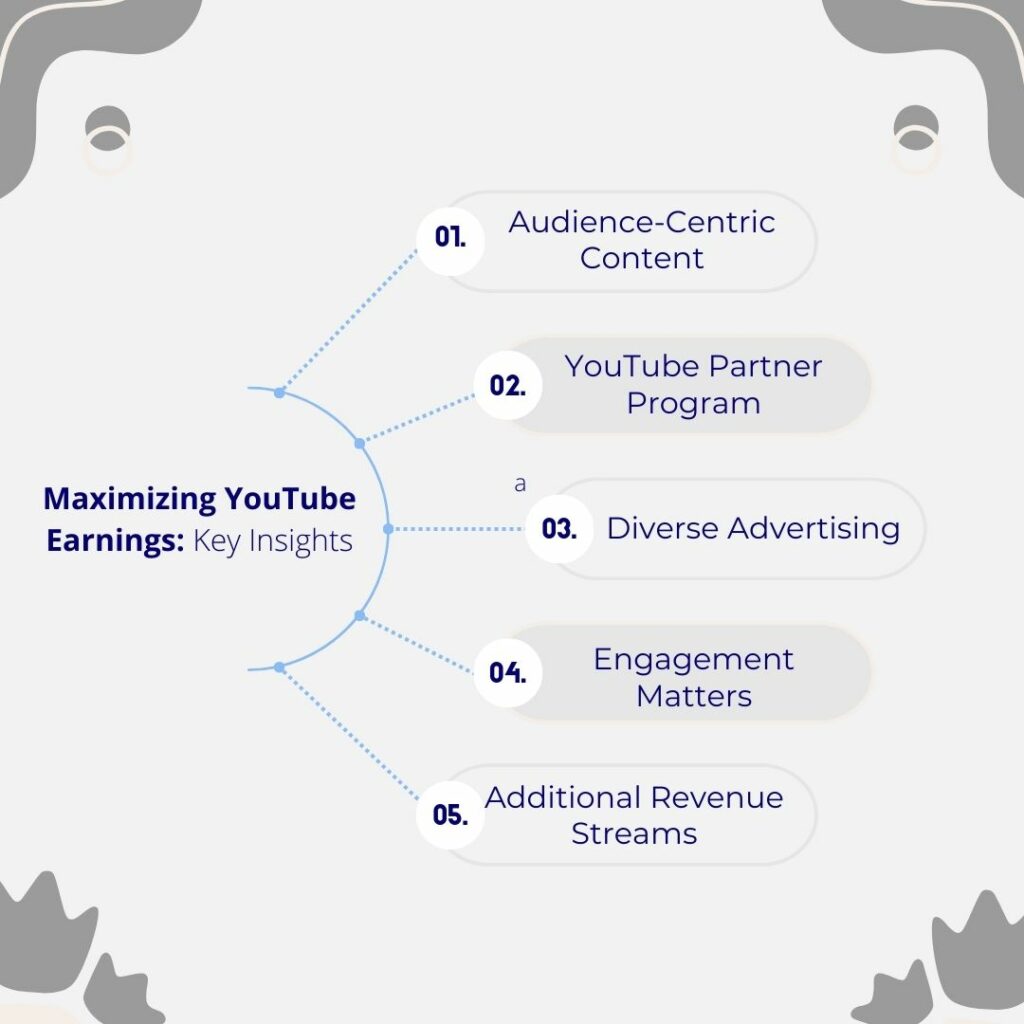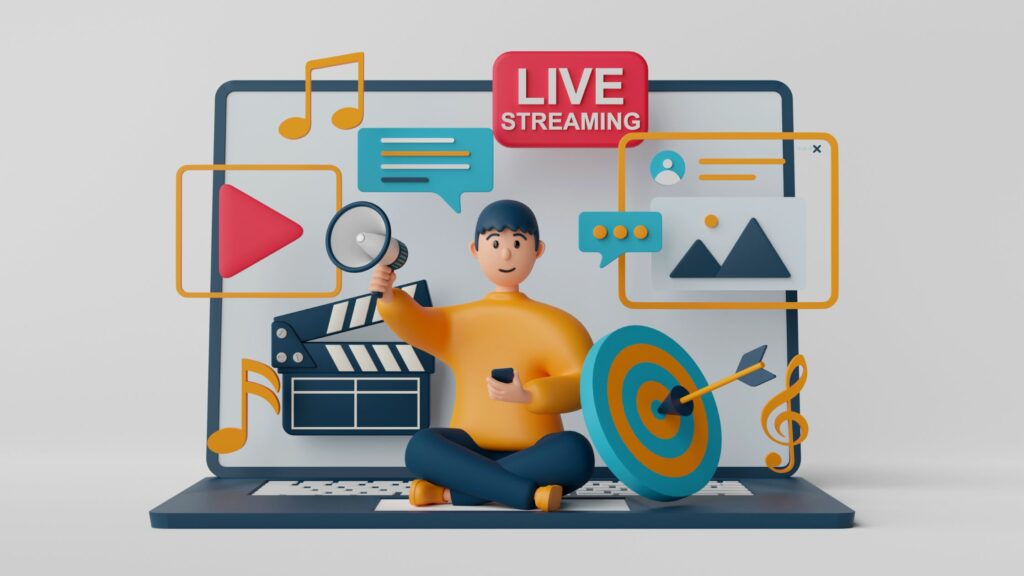Curious about how much money YouTubers actually earn? According to Influencer Marketing Hub, the average YouTuber makes around $0.018 per view, which translates to roughly $18 for every 1,000 ad views. In this article, we’ll delve into the average YouTube pay rate and share valuable tips for building a successful YouTube channel. So, if you’re interested in the world of YouTube earnings and achieving success on the platform, keep reading!
- How Much Money Can You Really Make on YouTube? The Truth Revealed
- The Evolution of YouTube as a Revenue Stream
- The Role of Content Creation
- Maximising Video Views and Advertising Revenue
- Leveraging Affiliate Links and Super Chat
- Understanding Monetisation Strategies
- So How Much Do Youtubers Really Make?
- Who are the highest-earning YouTubers of 2023?
- Frequently Asked Questions
How Much Money Can You Really Make on YouTube? The Truth Revealed
Have you ever wondered how much money YouTubers really make? With the evolution of YouTube as a revenue stream, content creators have been finding innovative ways to monetize their channels. From maximizing video views and advertising revenue to leveraging affiliate links and super chat, the strategies for making money on YouTube have expanded beyond traditional means. In this article, we will explore the truth about making money on YouTube and the various monetization strategies employed by successful content creators.
As YouTube continues to grow in popularity, content creators are constantly seeking new ways to maximize their income. This involves understanding monetization strategies and exploring exclusive content and merchandise sales. With the rise of influencer marketing and the impact of audience demographics, the highest-paid YouTubers and gaming channels have paved the way for innovative monetization policies and affiliate programs.
So, how much do YouTubers really make? Join us as we delve into the truth behind YouTube monetization and uncover the various strategies that have enabled content creators to earn substantial income through their channels.
The Evolution of YouTube as a Revenue Stream
The evolution of YouTube as a revenue stream showcases its explosive growth in the digital marketplace. Initially hosting a modest 30,000 channels in its Partner Program back in 2011, YouTube now supports over a million content creators eager to tap into its lucrative advertising potential. The platform’s ad revenue saw a staggering 46% increase from 2020 to 2021 alone, soaring to over $7 billion and contributing to a hefty $28.8 billion in total revenue.
YouTube’s Growth Timeline: | Explosive Ad Revenue Growth: | YouTube Partner Program Requirements: | Estimated Earnings for Creators: | YouTube Premium’s Impact: |
2011: 30,000 channels in the Partner Program | 2020: $5 billion in ad revenue | Minimum 1,000 subscribers | Earnings range from $0.30 to $2.50 per 1,000 views (CPM) | YouTube Premium has 50 million subscribers |
2022: Over 1 million content creators in the program | 2021: A staggering 46% increase, reaching over $7 billion | 4,000 public watch hours | YouTube takes about 45%, while creators keep 55%. | Creators earn from ad-free viewership, in addition to ad-supported views |
Total revenue for 2021: $28.8 billion | Eligibility in an eligible country | |||
Active Google AdSense account | ||||
Adherence to YouTube’s monetization policies |
To join the ranks of profit-making YouTubers and share in the vast advertising revenue, creators must navigate YouTube’s Partner Program prerequisites—achieving at least 1,000 subscribers, 4,000 public watch hours, living in an eligible country, and maintaining an active Google AdSense account, all while adhering to YouTube’s stringent monetization policies.
Participant earnings are estimated at $0.30 to $2.50 per 1,000 views (CPM), with YouTube claiming about 45% and creators pocketing the remaining 55%. Moreover, the advent of YouTube Premium, with its 50 million-strong subscriber base, fortifies creators’ revenue streams, ensuring they earn from ad-free viewership just as they do from traditional ad-supported views.
The Role of Content Creation
Content creation serves as the bedrock of any successful YouTube channel. High-quality, engaging video content is imperative for captivating an audience’s attention and fostering subscriber loyalty. In a digital arena where viewers are spoiled for choice, the content a YouTuber produces can make or break their channel. Successful creators pour hours into researching and meticulously planning their videos to ensure they strike the right chord with their audience.
Regularly unleashing fresh content is pivotal for fostering channel growth, as consistency plays a crucial role in building viewer trust and prompting frequent returns. Moreover, by delving into the analytics to understand their audience demographics, savvy YouTubers can tailor their content to appease the interests and predilections of their viewers, ensuring a higher level of engagement.
Creators can also experiment with a variety of content formats, from how-to tutorials and vlogs to product reviews and comedic skits. This variety not only caters to different audience preferences but also broadens a creator’s reach, thereby ballooning their potential viewer base. Ultimately, the essence of content creation is in providing value and entertainment, which in turn drives video views and channel growth.
Maximising Video Views and Advertising Revenue
When it comes to maximizing video views and advertising revenue, understanding the types of content that resonate with one’s audience is key. The YouTube Partner Program offers a pathway for creators to monetize their content, with channels needing at least 1,000 subscribers and 4,000 public watch hours. Once these thresholds are met, creators can earn revenue through video ads, facilitated by Google AdSense.

The advertising landscape on YouTube is diverse, featuring different types of ads, such as skippable and non-skippable video ads, overlay ads, and sponsored cards. Earnings from these ads are based on CPM rates, which can vary widely, in part due to audience demographics and the type of content produced. High-engagement content tailored to audience preferences typically commands better advertising rates.
Moreover, YouTube offers additional revenue streams such as channel memberships, where viewers pay for exclusive content, and features like Super Chat, which monetizes viewer interactions during live streams. By strategically leveraging these features and cultivating a robust body of engaging content, creators can dramatically enhance their earnings potential.
Leveraging Affiliate Links and Super Chat
For content creators on YouTube, diversifying income streams is crucial for building a full-time income. One effective monetization strategy is the use of affiliate marking. Content creators can embed affiliate links in their video descriptions or pinned comments, earning a commission on sales generated through those links. This approach taps into the revenue stream without relying solely on advertising, and when done effectively, can provide a significant source of passive income.
Super Chat and Super Stickers are another avenue for creators to bolster their income during live streams. Fans can purchase Super Chat messages that stand out in the live chat or share animated stickers with the community. These features allow creators not only to engage more deeply with their audience but also to generate additional earnings. Through an integrated approach, combining advertising revenue, affiliate programs, and direct audience support, YouTubers can maximize their financial success on the platform.
Understanding Monetisation Strategies
Understanding monetization strategies on YouTube requires a multifaceted approach, beyond just accumulating video views. Achieving the monetization thresholds, which include reaching 1,000 subscribers and racking up 4,000 watch hours over the past 12 months, unlocks features like Google AdSense and channel memberships. However, to build a sustainable income, YouTubers often diversify their revenue sources, incorporating affiliate marketing, merchandise sales, and sponsored content. This not only softens the blow of any fluctuations in ad revenue but also maximizes earning potential.

Enhancing video content quality, employing storytelling techniques, and encouraging audience interaction are crucial methods for maximizing ad revenue and other monetization options. Polls, Q&A sessions, and direct engagement strategies strengthen the relationship with viewers, which can lead to improved revenue opportunities. Additionally, understanding and adapting to YouTube’s algorithm updates is vital for creators who want to stay ahead, ensuring their content strategy aligns with platform changes.
For consistent revenue growth, it’s essential to maintain open communication with viewers, actively engage with the YouTube community, and show genuine gratitude towards the audience. These practices not only enhance the channel’s appeal but also cultivate a more dedicated and interactive subscriber base.
Exploring Exclusive Content and Merchandise Sales
One lucrative revenue stream on YouTube involves offering exclusive content. Specialized videos, behind-the-scenes access, or members-only series can incentivize viewers to subscribe to channel memberships or sign up for platforms like Patreon. Providing value through unique content creates a more intimate connection with the audience, driving engagement and revenue.
Merchandise sales offer another substantial opportunity. Content creators can tap into their online following and sell branded merchandise, like apparel and accessories, to translate their digital brand presence into tangible products. Integrating services like DSers and Shopify’s Google & YouTube app can make managing merchandise sales more efficient, providing seamless order processing and customer service.
The potential revenue from merchandise sales is evidenced by top YouTubers who have transformed their virtual audience into a significant physical merchandise market, with some earning millions from branded merchandise alone. Furthermore, beauty and lifestyle influencers have extended their reach into e-commerce by launching their successful product lines, an aspiration for many aspiring content creators.
Diversifying Income Streams and Passive Income
To achieve financial resilience and optimize earning potential, YouTube content creators often employ a mix of revenue sources. Google AdSense, affiliate marketing, channel memberships, and merchandise sales act as revenue pillars that, when combined, provide a balanced income stream.
Passive income is another important facet of a creator’s revenue. Evergreen content, which sustains viewer interest over time, continuously accumulates views and ad revenue, creating a long-term income source without daily active effort. In addition, creators diversify by selling digital products—like online courses, e-books, or exclusive video content. These products can generate income beyond the initial launch period, reinforcing the creator’s financial stability.
Affiliate marketing also plays a significant role, with content creators earning commissions from sales made through their unique affiliate links. By promoting products and services relevant to their audience, YouTubers can influence purchasing decisions and secure an additional income stream.
In conclusion, diversification isn’t just a buzzword but a necessity for YouTubers aiming for full-time content creation. By weaving together various forms of income, creators can capitalize on the multifaceted opportunities available on YouTube, providing both financial stability and the freedom to continue producing the content they are passionate about.
So How Much Do Youtubers Really Make?
On average, a YouTube content creator can earn about $5,499 monthly. This equates to roughly $1,269 per week and $18 per every thousand video views. However, earnings on YouTube can vary significantly. The top 3% of YouTube channels manage to pull in about $16,800 a year just from ad revenue. This reveals the potential for sizeable earnings on the platform, particularly in sought-after niches like gaming or lifestyle.
Potential YouTube Earnings Breakdown: | Popular YouTube Niches: |
Monthly Average: $5,499 | Gaming |
Weekly Average: $1,269 | Funny Videos |
Per 1,000 Views: $18 | Music Videos |
Top 3% Annual Ad Revenue: $16,800 | ASMR |
Educational Content | |
Lifestyle |
YouTubers can use earnings estimator tools for a closer look into how much a channel can make per video. Even channels with a smaller subscriber count can start earning early on through affiliate marketing. They do this by featuring popular product reviews and inserting affiliate links, earning commissions from resulting sales.
These niches demonstrate the varied and significant income potential for creators producing compelling content, offering a mix of entertainment and valuable information to their viewers.
Who are the highest-earning YouTubers of 2023?
Forbes provides us with a glimpse into the top 10 YouTube content creators and their impressive incomes:
MrBeast | $54 million |
Jake Paul | $45 million |
Markiplier | $38 million |
Rhett and Link | $30 million |
Unspeakable | $28.5 million |
Nastya | $28 million |
Ryan Kaji | $27 million |
Dude Perfect | $20 million |
Logan Paul | $18 million |
Preston Arsement | $16 million |
Frequently Asked Questions
Can you make a living off of YouTube?
Yes, it is possible to make a living off of YouTube, but it requires a lot of hard work and dedication. YouTubers who make a full-time income from their channels have often spent years building up their audience and creating high-quality content.
How many views do you need to make money on YouTube?
To start earning money on YouTube, you need to have at least 1,000 subscribers and 4,000 watch hours in the past 12 months. This allows you to join the YouTube Partner Program and start monetizing your content.
Do YouTubers get paid monthly?
Yes, YouTubers get paid monthly, but the exact payment schedule can vary depending on factors such as the payment method and country.
How much money do YouTubers make per view?
As mentioned earlier, YouTubers can make anywhere from $0.01 to $0.03 per view with AdSense, with an average of $0.18 per view. However, the actual amount varies based on various factors such as the number of views, ad quality, and click-through rate.
Can you make money on YouTube without ads?
Yes, there are other ways to make money on YouTube without relying solely on ads. YouTubers can also earn money through sponsorships, merchandise sales, crowdfunding, and more.
How long does it take to start making money on YouTube?
It can take some time to start making money on YouTube, especially if you’re just starting out. You need to build an audience and consistently produce engaging content. Additionally, you need to meet the YouTube Partner Program requirements, which include having at least 1,000 subscribers and 4,000 watch hours in the past 12 months. You can start making money once you meet these requirements and monetize your videos.
Can YouTubers make a living off of their earnings?
Yes, many YouTubers make a living off of their earnings. However, this depends on several factors, such as the number of views, videos produced, and the monetization strategies used. Some of the most successful YouTubers make millions of dollars per year, while others may make a more modest income.
How can YouTubers increase their earnings?
There are several ways YouTubers can increase their earnings, such as producing high-quality content that resonates with their audience, promoting their videos on other platforms, collaborating with other YouTubers, and using multiple monetization strategies, such as merchandise sales and sponsored content.
Overall, while making money on YouTube can be a lucrative venture, it requires hard work, dedication, and a willingness to adapt to changes in the platform and audience preferences continually.


